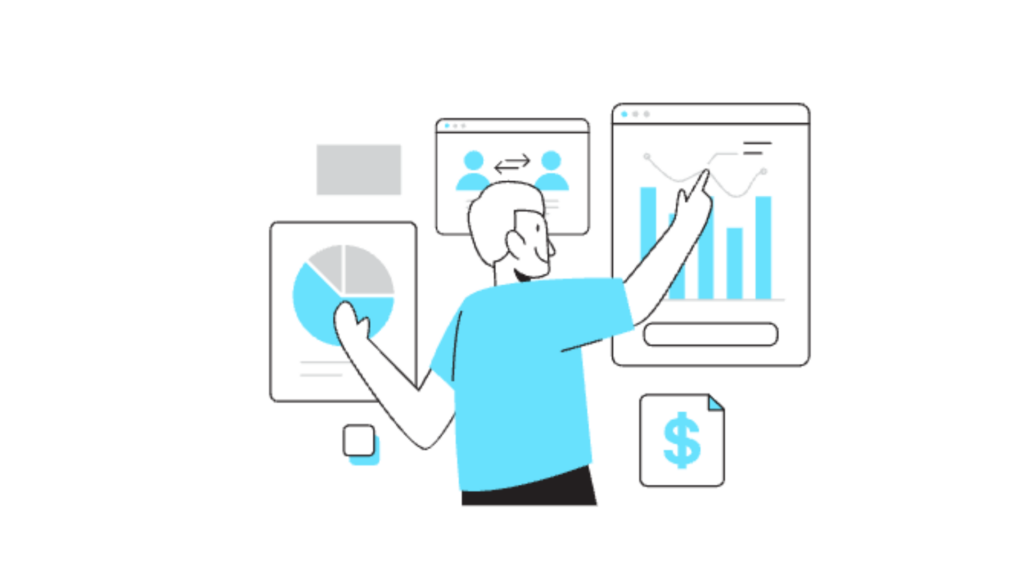Whois: Everything You Need to Know About Domain Ownership and Registration Information

If you’ve ever wondered who owns a particular domain or wanted details on a website’s registration, Whois provides exactly that kind of insight. From domain registration to expiration dates, Whois reveals vital information about websites and their owners. In this comprehensive guide, we’ll dive into what Whois is, how it works, and why it’s useful. Additionally, we’ll walk through best practices, common uses, and ways to access and interpret Whois data.
What is Whois?
Whois is a protocol and service used to look up information on domain registrations. Managed by the Internet Corporation for Assigned Names and Numbers (ICANN), Whois stores data related to domain names, such as registrant details, registrar information, and domain status. This information is accessible to anyone with an internet connection, making it an open tool for transparency in the digital world. Whether you’re verifying ownership, checking domain availability, or conducting security checks, Whois serves as a valuable resource.
For more on keeping digital information secure, you might want to check out our guide on protecting digital marketing assets, which covers best practices for safeguarding online properties.
Key Components of Whois Data
When you perform a Whois search, the returned data typically includes the following details:
- Domain Owner’s Name and Contact: Information about the registered owner, including the name and email.
- Registrar Information: Details on the company that registered the domain.
- Registration Dates: The original registration date and expiration date.
- Domain Status: Information on the domain’s operational status, including if it’s locked or in redemption.
- Nameservers: Identifies the DNS servers hosting the domain.
Having a clear understanding of these components helps users make informed decisions. Learn more about online branding and related topics with our article on building your brand through social media.
How to Use Whois Data: Practical Applications
Whois data is versatile, used by everyone from web admins to cybersecurity professionals. Here are a few primary ways Whois information benefits users:
1. Domain Availability Checks
- Before purchasing a domain, users can quickly confirm if it’s available. If it’s already registered, Whois provides information on when the registration expires or possible ways to contact the owner.
2. Verifying Domain Ownership
- Businesses often use Whois to validate the ownership of a website, ensuring transparency and avoiding potential scams. This is especially critical when acquiring a pre-existing domain or conducting partnerships.
3. Cybersecurity and Anti-Spam
- Security teams use Whois to track suspicious domains and detect potential threats. Verifying domain information helps prevent phishing attacks and online fraud.
For more security-focused insights, check out our article on SEO strategies to protect against threats, providing essential tips for safeguarding your site’s ranking and integrity.
Common Mistakes When Using Whois
Although Whois is straightforward, a few common mistakes can reduce its effectiveness. Here are some pitfalls to avoid:
1. Overlooking Privacy Concerns
- Not all registrants want their personal information displayed publicly. Failing to enable domain privacy protection can expose registrants to spam or cyber threats.
2. Relying on Outdated Information
- Sometimes, Whois information may not be up-to-date due to recent transfers or changes. Always verify the data from multiple sources if possible.
3. Assuming All Details Are Public
- Certain registrants or companies may have privacy protection that hides their identity in Whois results, so users shouldn’t rely solely on Whois for sensitive data.
For more strategies on handling online information, see our article on avoiding common SEO mistakes.
How to Perform a Whois Lookup: Step-by-Step Guide
Performing a Whois lookup is simple. Various websites provide Whois services, but most work similarly. Here’s how to perform a search:
- Choose a Whois Lookup Service: Popular options include Whois.net, ICANN, or your preferred domain registrar.
- Enter the Domain Name: Input the full domain name (e.g., “example.com”) you want information on.
- Review the Data: After searching, review the returned Whois data, which should include the domain owner, registration dates, and registrar.
- Take Appropriate Actions: Based on the information, you can make decisions—whether to proceed with purchasing the domain, contact the owner, or monitor the domain’s expiration.
For those interested in more ways to improve website interactions, check out our article on engaging social media strategies.
Pros and Cons of Using Whois
Here’s a quick look at the pros and cons of using Whois as a domain research tool:
| Pros | Cons |
|---|---|
| Provides transparent data | Privacy issues for registrants |
| Aids in cybersecurity efforts | Potentially outdated info |
| Essential for verifying ownership | Limited data for private domains |
While Whois offers a wealth of information, it’s also important to consider data privacy. If you’re looking into domain ownership as part of a larger branding strategy, see our guide on choosing the right domain name for your business.
Privacy and Whois: The Role of GDPR
In recent years, privacy regulations like the General Data Protection Regulation (GDPR) have changed how Whois data is displayed, especially for domains registered in the EU. GDPR restricts the visibility of personal data, making some registrant information private by default. Here’s how GDPR impacts Whois:
- Redacted Data: Personal data such as names, addresses, and contact details may be hidden from public view, displaying generic or redacted information instead.
- Private Registration Options: Registrants often have the choice to keep their details private through the registrar, even outside GDPR regions.
- Selective Access: Some data is only accessible to authorized organizations, like law enforcement.
If you’re curious about privacy in the digital world, check out our article on data management and privacy.
Future Trends: The Evolution of Whois
As privacy concerns grow and regulations evolve, Whois is likely to change further. Here’s what to expect in the coming years:
1. Increased Privacy Measures
- With growing data protection laws worldwide, more registrants may opt for private registrations, which could lead to further restrictions on public Whois data.
2. Enhanced Security Protocols
- As online threats rise, Whois may integrate additional security features, potentially including real-time alerts for domain status changes or ownership transfers.
3. AI-Powered Data Analysis
- Machine learning could help analyze Whois data patterns, allowing for more effective detection of fraudulent domains or suspicious activity.
For those exploring future-ready strategies, our article on the psychology behind consumer behavior may offer some valuable insights.
Best Practices for Using Whois Data
To get the most from Whois, keep these best practices in mind:
- Verify Data Regularly: Whois information may change due to domain transfers or updates, so check back regularly for the most current data.
- Use Private Registration: If privacy is a concern, opt for private registration through your registrar to keep personal details hidden.
- Cross-Reference Data: Validate Whois data with other sources to ensure accuracy, especially if using it for security or business purposes.
For further strategies on managing digital assets, read about effective brand protection measures.
Common Misconceptions About Whois
There are several myths surrounding Whois data. Let’s debunk a few:
- Myth 1: “Whois always shows accurate information.”
- Reality: Not always. Due to outdated records or privacy restrictions, some data may be inaccurate.
- Myth 2: “All domain information is public.”
- Reality: Many domains use privacy protection, so details may be hidden.
- Myth 3: “Whois is only for tech experts.”
- Reality: Anyone can use Whois; it’s a straightforward tool accessible to all internet users.
For more on overcoming myths, explore our guide on digital marketing fundamentals.



